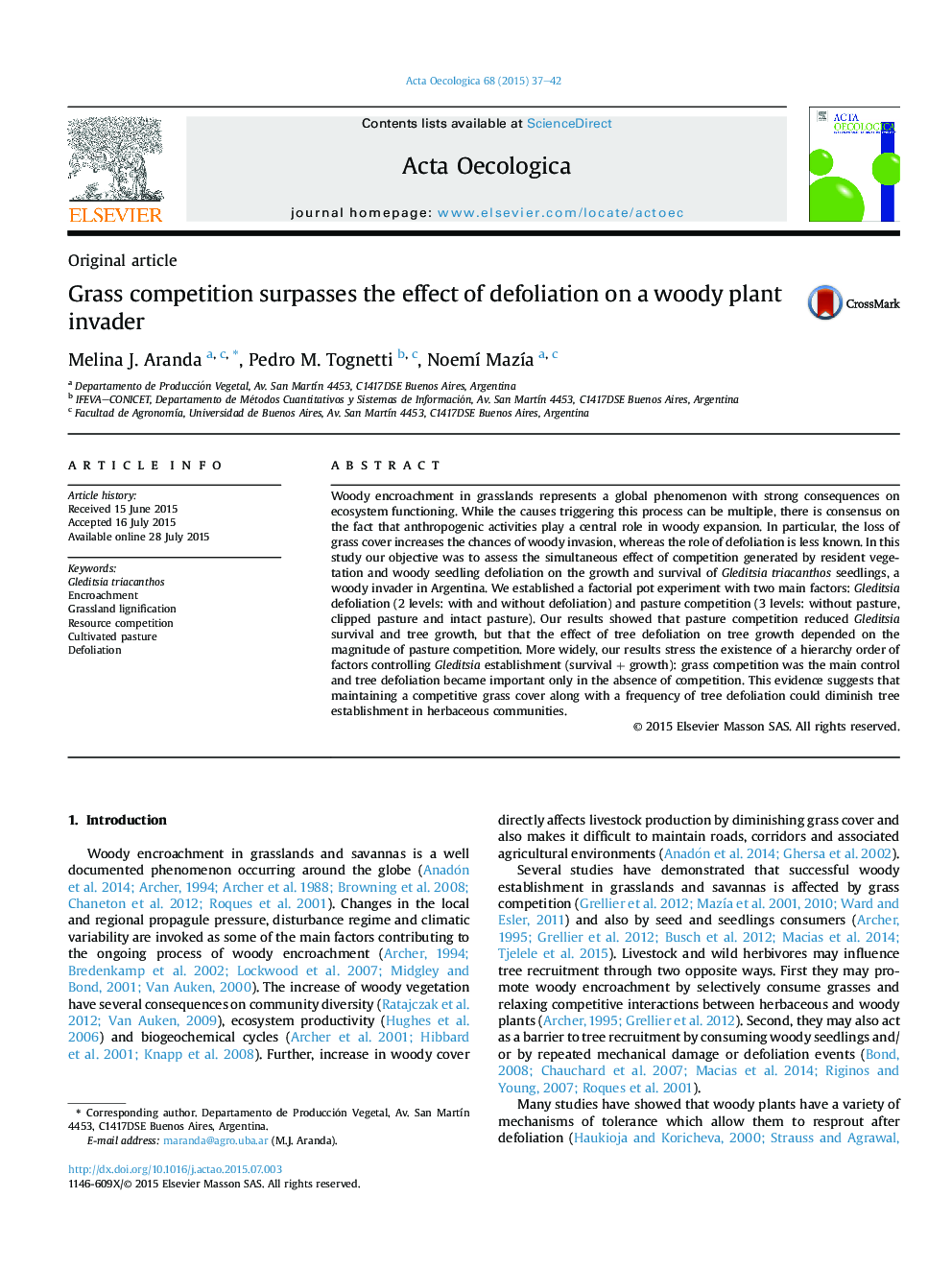| Article ID | Journal | Published Year | Pages | File Type |
|---|---|---|---|---|
| 4380902 | Acta Oecologica | 2015 | 6 Pages |
Woody encroachment in grasslands represents a global phenomenon with strong consequences on ecosystem functioning. While the causes triggering this process can be multiple, there is consensus on the fact that anthropogenic activities play a central role in woody expansion. In particular, the loss of grass cover increases the chances of woody invasion, whereas the role of defoliation is less known. In this study our objective was to assess the simultaneous effect of competition generated by resident vegetation and woody seedling defoliation on the growth and survival of Gleditsia triacanthos seedlings, a woody invader in Argentina. We established a factorial pot experiment with two main factors: Gleditsia defoliation (2 levels: with and without defoliation) and pasture competition (3 levels: without pasture, clipped pasture and intact pasture). Our results showed that pasture competition reduced Gleditsia survival and tree growth, but that the effect of tree defoliation on tree growth depended on the magnitude of pasture competition. More widely, our results stress the existence of a hierarchy order of factors controlling Gleditsia establishment (survival + growth): grass competition was the main control and tree defoliation became important only in the absence of competition. This evidence suggests that maintaining a competitive grass cover along with a frequency of tree defoliation could diminish tree establishment in herbaceous communities.
